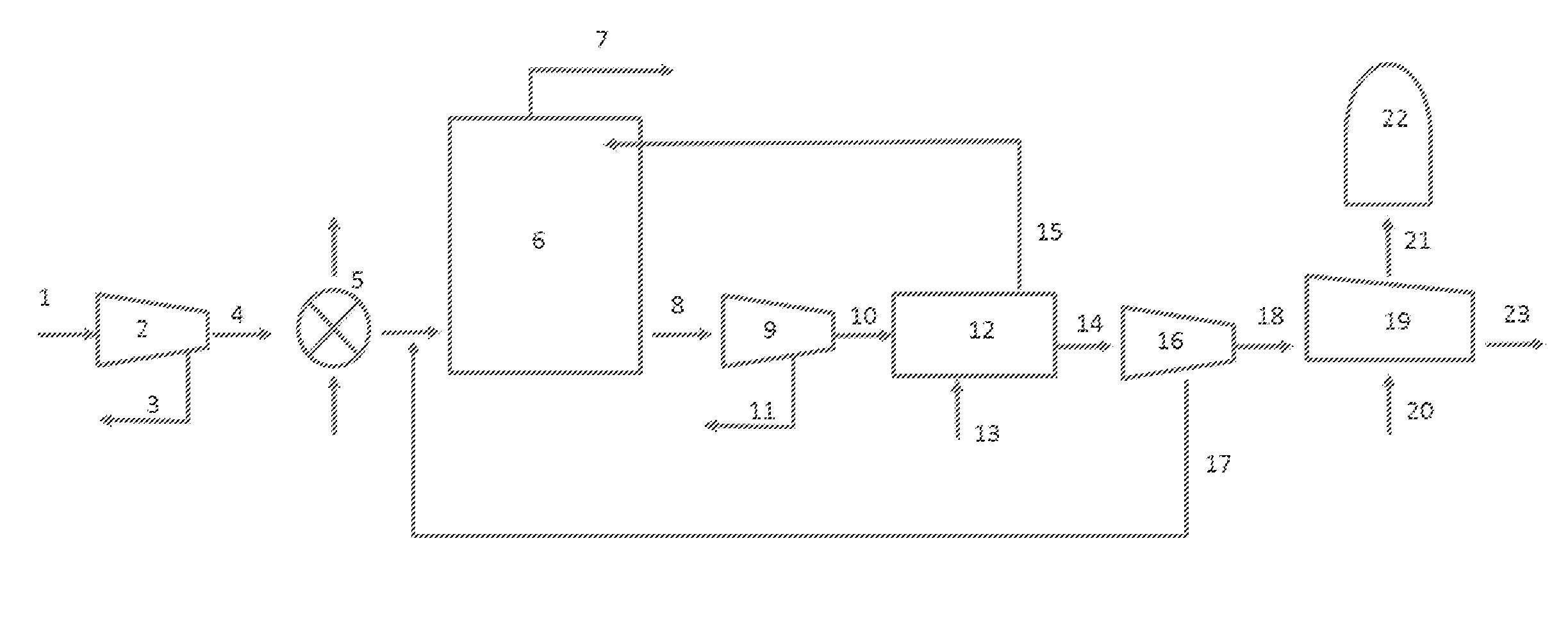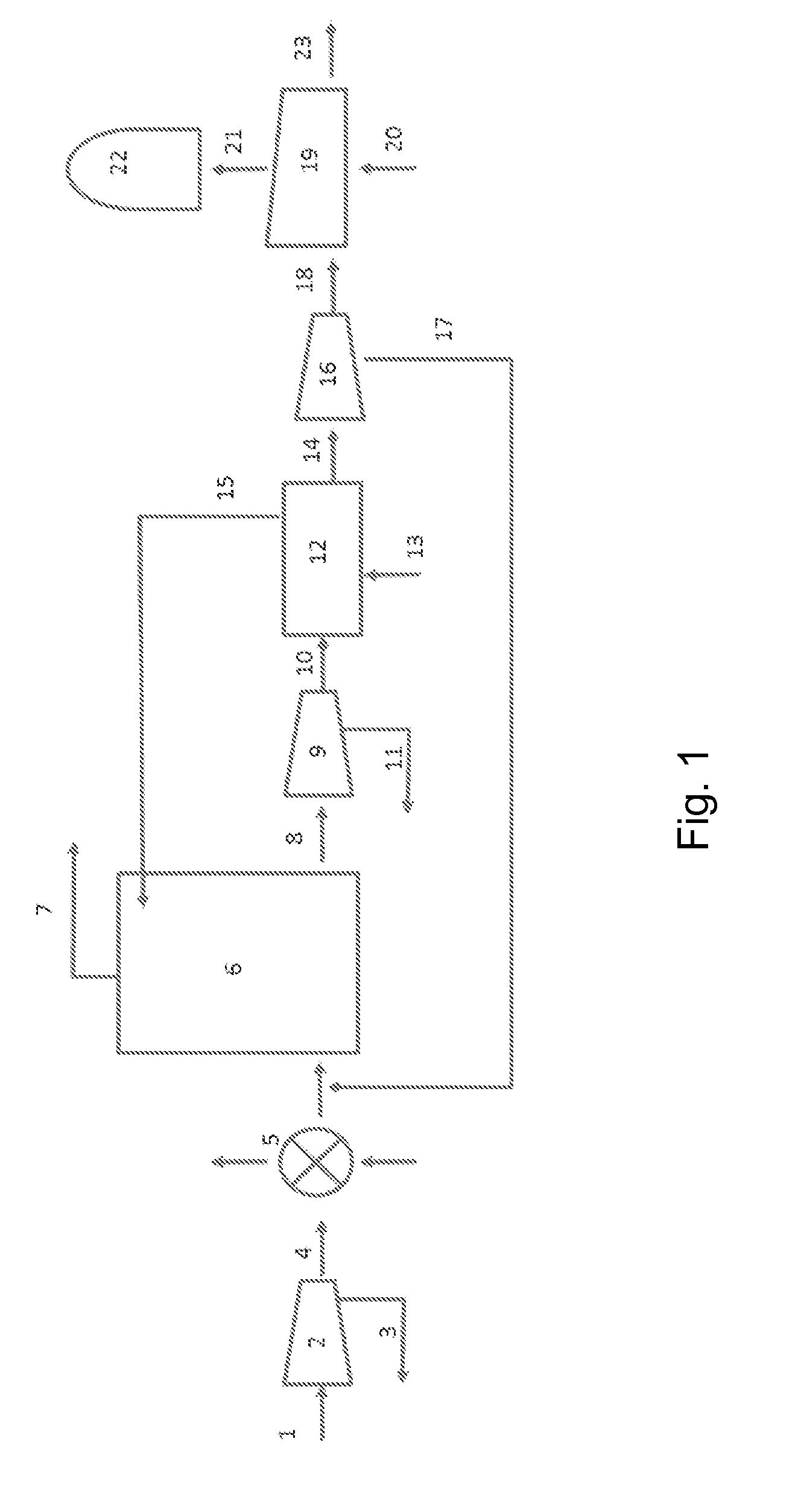Method and device for thermal biological breakdown and dewatering of biomass
- Summary
- Abstract
- Description
- Claims
- Application Information
AI Technical Summary
Benefits of technology
Problems solved by technology
Method used
Image
Examples
example
[0036]Dewatered biological residue with a dry matter content of 28% from a thermophilic digesting tank with 60% conversion of organic material to biogas from a full scale treatment plant, was thermally hydrolysed at 165° C. and steam exploded in a test rig. 20-30% of the organic matter that was in the biological residue was hydrolysed and followed the liquid phase in the subsequent dewatering. The dewatering of the thermally hydrolysed and steam exploded biological residue took place in a centrifuge without the use of polymers and ended up at 45-55% dry matter. The liquid phase from the dewatering was digested in bottle tests where 83-96% of the hydrolysed organic matter was converted to biogas.
[0037]If one uses these test results as a premise for the full scale plant at which the test was carried out, this will result in an 11-18% increase in biogas production and 44-55% reduction in the amount of dewatered biological residue. This represents considerable economic advantages for th...
PUM
| Property | Measurement | Unit |
|---|---|---|
| Temperature | aaaaa | aaaaa |
| Temperature | aaaaa | aaaaa |
| Fraction | aaaaa | aaaaa |
Abstract
Description
Claims
Application Information
 Login to View More
Login to View More - R&D
- Intellectual Property
- Life Sciences
- Materials
- Tech Scout
- Unparalleled Data Quality
- Higher Quality Content
- 60% Fewer Hallucinations
Browse by: Latest US Patents, China's latest patents, Technical Efficacy Thesaurus, Application Domain, Technology Topic, Popular Technical Reports.
© 2025 PatSnap. All rights reserved.Legal|Privacy policy|Modern Slavery Act Transparency Statement|Sitemap|About US| Contact US: help@patsnap.com


